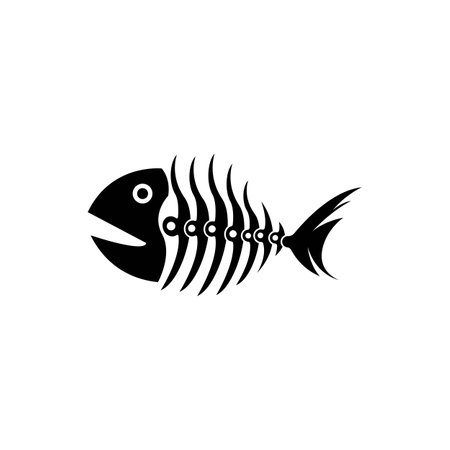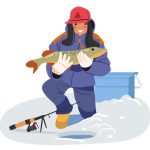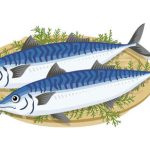Understanding Eco-Friendly Fishing Tackle
Eco-friendly fishing tackle is all about making smarter, greener choices when it comes to your gear. Whether youre casting lines in a quiet lake or heading out for deep sea action, the kind of equipment you use can have a big impact on the environment. Let’s break down what makes fishing tackle eco-friendly and why it matters.
Why Traditional Tackle Can Harm the Environment
Many traditional fishing products are made from materials like lead, plastic, and non-degradable components that can hurt fish, birds, and aquatic ecosystems. Lost or broken gear often ends up as pollution in our waterways, causing long-term damage.
Common Environmental Issues with Traditional Tackle
| Gear Type | Environmental Problem |
|---|---|
| Lead Sinkers | Toxic to wildlife; ingestion by birds and fish can be fatal |
| Plastic Lures & Lines | Non-biodegradable; contributes to microplastic pollution |
| Monofilament Line | Easily lost and entangles marine life; takes hundreds of years to decompose |
| Metal Hooks | Can remain in fish after catch-and-release; may rust slowly and cause injury or death |
What Makes Fishing Gear Eco-Friendly?
Sustainable tackle focuses on reducing harm to the environment while still getting the job done. This includes using safer materials, better designs, and biodegradable options that reduce waste and protect wildlife.
Key Features of Eco-Friendly Tackle
| Feature | Description | Environmental Benefit |
|---|---|---|
| Bismuth or Tin Sinkers | Non-toxic metal alternatives to lead weights | Safer for aquatic animals and birds if ingested |
| Biodegradable Lures | Lures made from plant-based or water-soluble materials | Breaks down naturally over time; less plastic waste in water bodies |
| Braided Natural Fiber Lines | Fishing line made from hemp or cotton fibers | More environmentally friendly than synthetic lines; easier to degrade if lost in nature |
| Barbless Hooks or Circle Hooks | Hooks designed for easy removal and reduced injury during catch-and-release fishing | Lowers stress and mortality rates in released fish populations |
The Role of Design in Sustainable Gear Choices
Apart from materials, design plays a huge part in how sustainable your tackle is. For example, modular designs allow anglers to replace parts instead of tossing out the whole piece. Reusable rigs and multi-use lures also help cut down on waste. Choosing high-quality gear that lasts longer means fewer replacements and less environmental impact.
A Simple Tip for Responsible Anglers:
If you’re not sure where to start, look for products labeled as “lead-free,” “biodegradable,” or “eco-safe.” Many American brands are now offering greener alternatives that align with conservation efforts without sacrificing performance.
2. Choosing Sustainable Hooks, Sinkers, and Lures
Switching to eco-friendly fishing tackle is one of the easiest ways to reduce your environmental impact without sacrificing performance. Traditional gear like lead sinkers and plastic lures can harm fish, birds, and water quality. Luckily, there are sustainable alternatives that work just as well in American lakes, rivers, and coastal waters.
Why Avoid Lead and Plastic?
Lead is toxic to wildlife, especially birds that accidentally ingest lost sinkers. Plastics can take hundreds of years to break down and often end up polluting waterways or being mistaken for food by aquatic animals. By choosing biodegradable or non-toxic materials, anglers can help preserve the waters they love to fish in.
Eco-Friendly Sinkers
There are several great non-lead options available today that are safe for both the environment and fish. Here’s a quick comparison:
| Material | Pros | Best Use |
|---|---|---|
| Tin | Non-toxic, affordable, widely available | General freshwater and saltwater fishing |
| Bismuth | Heavier than tin, non-toxic | Deeper water or strong current conditions |
| Steel | Durable, inexpensive | Pier or surf fishing where abrasion is common |
| Tungsten | Very dense, small profile, sensitive feel | Bass fishing or finesse techniques |
Greener Hooks
When it comes to hooks, stainless steel may last long but can take years to corrode if left in a fish’s mouth. Instead, consider using:
- Barbless Hooks: Easier to remove, less damage to fish—great for catch and release.
- Corrosion-Prone Steel Hooks: Designed to dissolve over time if left in a fish.
- Chemically-Sharpened Carbon Steel: Strong and sharp with less environmental impact than traditional stainless hooks.
Sustainable Lures
The good news is that many brands now offer biodegradable soft plastics and wooden hard baits that don’t add microplastics to our lakes and rivers. Look for these options:
- Biodegradable Soft Baits: Made from plant-based materials that break down naturally over time.
- Wooden Crankbaits: Long-lasting and recyclable; often made from sustainably sourced wood.
- Nontoxic Paints & Dyes: Choose lures finished with eco-safe coatings.
Popular Eco-Friendly Brands in the U.S.
| Brand | Sustainable Product Types | Main Features |
|---|---|---|
| Z-Man ElaZtech® | Biodegradable soft plastics | Tough yet eco-conscious material that floats and lasts longer |
| LIVETARGET® | Wooden crankbaits & topwaters | Sustainably harvested wood with realistic designs |
| K&E Stopper Lures™ | Tin sinkers & barbless hooks kits | Affordable starter packs for ethical anglers |
Small Changes Make a Big Difference
You don’t need to overhaul your whole tackle box at once. Start by replacing one or two items with greener alternatives each season. Over time, you’ll build an environmentally responsible setup—and help keep America’s waters clean for future generations of anglers.

3. Eco-Conscious Brands Making a Difference
As more American anglers look for ways to reduce their environmental impact, several tackle companies—both in the U.S. and globally—are stepping up with eco-friendly gear options. These brands focus on sustainable materials, biodegradable packaging, and ethical manufacturing practices that align with the values of responsible fishing.
U.S.-Based Tackle Brands Leading the Way
Some American companies are truly setting the standard when it comes to green fishing gear. Whether its using recycled metals or plant-based plastics, these brands are all about preserving our waterways for future generations.
| Brand | Location | Sustainable Practices |
|---|---|---|
| Z-Man Fishing Products | South Carolina | Uses 10X Tough ElaZtech® soft plastics which are non-toxic and long-lasting, reducing waste |
| Green Fish Tackle Co. | Georgia | Makes tungsten weights and jigs with eco-safe finishes; focuses on plastic-free packaging |
| Reel Green Tackle | California | Offers biodegradable soft baits and uses recycled materials in all packaging |
Global Brands Making a Positive Impact
Outside of the United States, other companies are also making waves in sustainable fishing gear. These international brands show that eco-conscious angling is becoming a global movement.
| Brand | Country | Sustainable Features |
|---|---|---|
| Savage Gear | Denmark | Pioneers in using biodegradable lures and recyclable packaging across product lines |
| Fishpond USA* | USA (with global presence) | Creates gear using recycled fishing nets (Cyclepond fabric) and supports water conservation projects worldwide |
| BIOBAITS | Canada | Makes fully biodegradable soft baits made from natural ingredients safe for fish and water systems |
*Note:
Fishpond USA is headquartered in Colorado but has a strong international distribution network, making it both a domestic and global player in eco-friendly angling.
Why It Matters
The choices we make as anglers have a ripple effect on the environment. By supporting these forward-thinking brands, were not just buying tackle—were casting votes for cleaner lakes, rivers, and oceans.
Your Role as a Responsible Fisherman
If youre ready to take your fishing game to the next level in sustainability, consider giving these eco-conscious brands a try. Theyre proof that you dont have to sacrifice performance to protect the planet.
4. Best Practices for Responsible Fishing
Fishing responsibly isnt just about the gear you use—its also about how you treat the environment and the fish themselves. Whether youre casting a line from a local dock or heading out on a bass boat, here are some easy-to-follow best practices that every American angler can adopt to keep our waters clean and fish populations healthy.
Catch-and-Release Techniques
Practicing catch-and-release is a great way to enjoy fishing while helping preserve fish populations. To do it right:
- Use barbless hooks: They make unhooking easier and reduce injury to the fish.
- Handle with wet hands: This helps protect the fish’s slime coating, which is vital for its health.
- Minimize air exposure: Try to keep the fish in water as much as possible and release it quickly.
- Support the fish properly: Hold it horizontally and avoid squeezing.
Proper Disposal of Old Gear
Discarded fishing gear like lines, lures, and hooks can harm wildlife and pollute waterways. Heres how to dispose of them responsibly:
| Item | Eco-Friendly Disposal Method |
|---|---|
| Fishing Line | Recycle at designated monofilament recycling bins (often found at marinas or tackle shops) |
| Old Lures & Hooks | Collect in a container and drop off at a metal recycling center or your local hazardous waste facility |
| Bait Containers | Reuse if possible or recycle according to local guidelines |
Sourcing Bait Responsibly
The bait you use can impact local ecosystems. Heres what you should consider when choosing bait:
- Avoid non-native live bait: It can escape into the wild and disrupt local species.
- Use certified disease-free bait: Especially important when fishing in freshwater lakes and rivers.
- Try eco-friendly artificial baits: These reduce the risk of introducing invasive species and last longer.
Tips for Storing and Disposing of Bait
- Never release unused live bait into the water.
- If your bait dies, compost it (if allowed) or dispose of it in the trash—not in nature.
Create a Personal Eco Checklist
If youre not sure where to start, try this simple checklist before your next fishing trip:
| Action | Status |
|---|---|
| Packing barbless hooks | ☑ |
| Taking reusable bait containers | ☑ |
| Bringing a bag for old line & trash | ☑ |
| Sourcing local, sustainable bait | ☑ |
By following these best practices, every American fisher can help ensure our lakes, rivers, and oceans remain healthy for future generations to enjoy.
5. How American Anglers Can Advocate for Cleaner Waters
Being a responsible angler goes beyond just using eco-friendly tackle—its also about taking action to protect the waters we love. Across the United States, more and more fishermen are stepping up as stewards of the environment. Whether youre casting lines in a small mountain stream or deep-sea fishing off the coast, your voice and actions can make a big difference.
Join Local Waterway Clean-Up Events
One of the easiest and most impactful ways to help is by participating in clean-up events. These gatherings bring together like-minded anglers and community members to remove trash from rivers, lakes, and shorelines. Check with local fishing clubs, conservation groups, or even your city’s parks department to find events near you. Many national organizations like Trout Unlimited or Keep America Beautiful host annual clean-ups too.
Support Conservation Programs
There are plenty of great programs across the U.S. that focus on habitat restoration, fish population health, and water quality improvement. Consider donating to or volunteering with these organizations. You can even look into adopting a stream or sponsoring replanting projects. Every bit helps.
Popular Conservation Organizations
| Organization | Focus Area | How You Can Help |
|---|---|---|
| Trout Unlimited | Coldwater fisheries & habitats | Volunteer, donate, participate in restoration projects |
| Costa’s Kick Plastic Campaign | Plastic waste reduction | Use reusable gear, spread awareness, join events |
| The Ocean Conservancy | Marine ecosystems | Join beach cleanups, advocate for marine policy changes |
Promote Policy Change in Your Community
Your voice matters when it comes to environmental policy. Contact local officials and express support for regulations that protect aquatic environments—like bans on lead sinkers or restrictions on single-use plastics near waterways. Attend town hall meetings, write letters, and use social media to raise awareness among fellow anglers.
Create Awareness Among Fellow Fishers
A simple conversation at the dock or boat ramp can go a long way. Share tips about eco-friendly tackle options or invite friends to join you at the next clean-up event. The more people who get involved, the better chance we have of preserving our waters for future generations.
Quick Tips for Everyday Advocacy:
- Use biodegradable fishing line and non-toxic weights.
- Dispose of old tackle responsibly—never toss it in the water.
- Practice catch-and-release with proper techniques to reduce fish stress.
- Keep a trash bag in your tackle box to collect litter as you fish.
- Follow Leave No Trace principles whenever youre outdoors.
No matter where you fish—from Florida’s mangroves to Michigan’s inland lakes—you have an opportunity to be part of something bigger than yourself: protecting Americas natural waters so they remain vibrant and full of life for generations to come.


